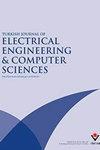Understanding attribute and social circle correlation in social networks
IF 1.5
4区 计算机科学
Q4 COMPUTER SCIENCE, ARTIFICIAL INTELLIGENCE
Turkish Journal of Electrical Engineering and Computer Sciences
Pub Date : 2019-04-01
DOI:10.3906/ELK-1806-91
引用次数: 2
Abstract
Social circles, groups, lists, etc. are functionalities that allow users of online social network (OSN) platforms to manually organize their social media contacts. However, this facility provided by OSNs has not received appreciation from users due to the tedious nature of the task of organizing the ones that are only contacted periodically. In view of the numerous benefits of this functionality, it may be advantageous to investigate measures that lead to enhancements in its efficacy by allowing for automatic creation of customized groups of users (social circles, groups, lists, etc). The field of study for this purpose, i.e. creating coarse-grained descriptions from data, consists of two families of techniques, community discovery and clustering. These approaches are infeasible for the purpose of automation of social circle creation as they fail on social networks. A reason for this failure could be lack of knowledge of the global structure of the social network or the sparsity that exists in data from social networking websites. As individuals do in real life, OSN clients dependably attempt to broaden their groups of contacts in order to fulfill different social demands. This means that ‘homophily’ would exist among OSN users and prove useful in the task of social circle detection. Based on this intuition, the current inquiry is focused on understanding ‘homophily’ and its role in the process of social circle formation. Extensive experiments are performed on egocentric networks (ego is user, alters are friends) extracted from prominent OSNs like Facebook, Twitter, and Google+. The results of these experiments are used to propose a unified framework: feature extraction for social circles discovery (FESC). FESC detects social circles by jointly modeling ego-net topology and attributes of alters. The performance of FESC is compared with standard benchmark frameworks using metrics like edit distance, modularity, and running time to highlight its efficacy.理解社交网络中的属性和社交圈关联
社交圈、群组、列表等是允许在线社交网络(OSN)平台的用户手动组织其社交媒体联系人的功能。然而,osn提供的这种功能并没有得到用户的赞赏,因为组织那些只定期联系的osn的任务很繁琐。考虑到此功能的众多好处,通过允许自动创建自定义用户组(社交圈、组、列表等)来研究导致其有效性增强的措施可能是有益的。为此目的的研究领域,即从数据中创建粗粒度描述,由两类技术组成,社区发现和聚类。这些方法对于社交圈创建的自动化来说是不可行的,因为它们在社交网络上是失败的。这种失败的一个原因可能是缺乏对社交网络全局结构的了解,或者来自社交网站的数据存在稀疏性。就像现实生活中的个人一样,OSN的客户也会试图扩大他们的接触群体,以满足不同的社会需求。这意味着“同质性”将存在于OSN用户之间,并在社交圈检测任务中被证明是有用的。基于这种直觉,当前的研究重点是理解“同质性”及其在社交圈形成过程中的作用。在以自我为中心的网络(自我是用户,改变者是朋友)上进行了大量的实验,这些网络从Facebook、Twitter和Google+等著名的网络节点中提取出来。利用这些实验的结果提出了一个统一的框架:社交圈发现特征提取(FESC)。FESC通过联合建模自我网络拓扑和改变者的属性来检测社交圈。使用编辑距离、模块化和运行时间等指标将FESC的性能与标准基准框架进行比较,以突出其有效性。
本文章由计算机程序翻译,如有差异,请以英文原文为准。
求助全文
约1分钟内获得全文
求助全文
来源期刊

Turkish Journal of Electrical Engineering and Computer Sciences
COMPUTER SCIENCE, ARTIFICIAL INTELLIGENCE-ENGINEERING, ELECTRICAL & ELECTRONIC
CiteScore
2.90
自引率
9.10%
发文量
95
审稿时长
6.9 months
期刊介绍:
The Turkish Journal of Electrical Engineering & Computer Sciences is published electronically 6 times a year by the Scientific and Technological Research Council of Turkey (TÜBİTAK)
Accepts English-language manuscripts in the areas of power and energy, environmental sustainability and energy efficiency, electronics, industry applications, control systems, information and systems, applied electromagnetics, communications, signal and image processing, tomographic image reconstruction, face recognition, biometrics, speech processing, video processing and analysis, object recognition, classification, feature extraction, parallel and distributed computing, cognitive systems, interaction, robotics, digital libraries and content, personalized healthcare, ICT for mobility, sensors, and artificial intelligence.
Contribution is open to researchers of all nationalities.
 求助内容:
求助内容: 应助结果提醒方式:
应助结果提醒方式:


